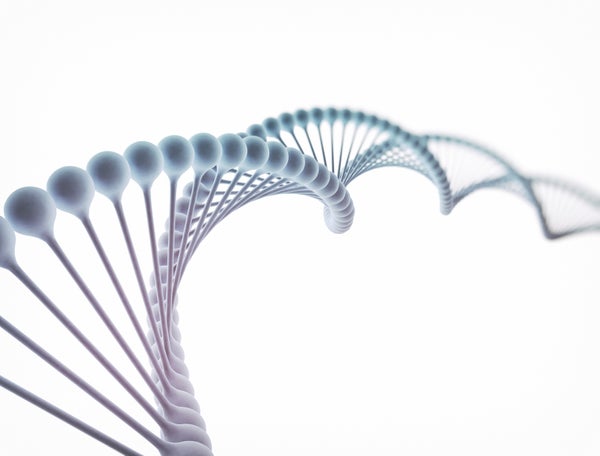Nature is a master at constructing biological machines and circuits, including the ones that maintain the body's internal clock, copy genes or help cells move. Now human engineers are learning to design and synthesize novel biochemical devices such as nanoscale factories, biological circuits and even molecular computers.
This work has so far relied mostly on using existing cellular components (enzymes, for example), but some researchers prefer to start from scratch. For these “molecular programmers,” DNA is the coding language of choice, and crafting circuits and machines to rival those found in nature is the ultimate goal. Recently they took a big step closer by creating the first oscillator—a molecular clock—made solely of DNA.
This milestone achievement, reported last December in Science, shows that DNA is not simply a passive carrier of genetic information. Instead it is a molecule that—even on its own—“is capable of complex behavior,” says senior author David Soloveichik, an electrical and computer engineer at the University of Texas at Austin. Building a DNA oscillator is a biological engineering feat in itself and would likely be integral for potential breakthroughs in synthetic biology, such as controlling the timing of events in artificial cells, scheduling the release of drugs and synchronizing molecular computers.
On supporting science journalism
If you're enjoying this article, consider supporting our award-winning journalism by subscribing. By purchasing a subscription you are helping to ensure the future of impactful stories about the discoveries and ideas shaping our world today.
To create the device, Soloveichik, Niranjan Srinivas, then a doctoral candidate at the California Institute of Technology, and their colleagues built a DNA compiler—a series of algorithms that allows a programmer to issue molecule-building instructions without having to get into the nitty-gritty biochemistry. Software translates those instructions into DNA sequences that are synthesized and mixed together. The strands then self-assemble into molecular machines.
Using its compiler, the team programmed a prototype DNA oscillator that generates repeating patterns of “ticks” and “tocks.” In principle, Soloveichik says, the same formula can be used to produce more complex behavior, such as changing the clock's speed in response to chemical signals. These clocks could eventually lead to chemical computation—after all, some of the first mechanical computers were simply sophisticated clocks.
Peng Yin, a systems biologist at Harvard University, who was not involved in the new research, says he is impressed by the work and calls it “an important advance for molecular programming, dynamic DNA nanotechnology and in vitro synthetic biology.” And given that scientists believe early life was based entirely on DNA's close relative, RNA, Soloveichik adds that “showing that nucleic acids like DNA and RNA can behave in new and unexpected ways informs our understanding of the origin of life.”
